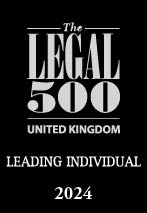With a new season beginning in many of our favourite sports, it’s a good time to think about squad selection. Whether we’re talking about football, rugby or next year’s Ryder Cup selection, the best managers are masters of more than tactics and technical detail – they’re also brilliant at assembling a team of people that fit together.
It’s a lesson that charities (and other organisations) should also follow when putting together their boards and senior teams. It’s not just about signing up great people, it’s also about leaving no gaps.
Here are six simple steps to make sure your charity has the right team signed up, not just to deliver the goals, the glory tries and the slam dunks, but to provide assists, stability in defence and a calm head or stirring team talk when you’re a few points down.
1. Identify the mix of skill sets your board needs
There’s no single right answer to this one, and it will depend on your size, activities, sector, challenges and ambitions, among other factors. The ‘best’ mix may also evolve over time, especially if you have fresh strategic priorities or needs to address – for example, you want to generate new revenues, reach new supporters, pursue public sector contracts or grants for the first time, or are considering a merger with another charity.
Other scenarios that may require new skillsets in the squad include regulatory or societal changes. For example, in recent years some charities have sought trustees with experience in the digital world to help them navigate areas like cybersecurity, data privacy and safeguarding.
2. Carry out a skills audit
A skills audit is a helpful exercise to identify gaps and help the board focus on priorities for building the trustee team (and even a youth academy of observers for the future). Questions to consider could include:
- What challenges and opportunities are your board and charity facing immediately and in the medium to longer term?
- Which skills and experience would be helpful in dealing with these?
- Where are the gaps between what you have now and what you might need?
- How might your organisation benefit from a greater diversity of experience – not only in operational terms but also in other respects, from reputation to revenue generation?
- And does your board reflect and represent your charity’s beneficiaries, or might lived experience be required at board level?
Your skills audit should also encompass an element of succession planning, looking to fill any gaps likely to open up in future if trustees hang up their boots.
3. Consider your constitution – and other paperwork
Your governing documents will guide (or limit) you on this one, with rules about appointing new trustees, and perhaps restrictions on who can, or cannot, be a trustee. A sift through your paperwork and files may provide further help here – perhaps a previous role description, trustee advertisement, or information packs.
It’s possible this process could open up useful longer-term conversations around the board table about whether your governance or approach to recruitment are fit for the current landscape or acting as barriers to getting the best squad in place.
If you do have any fitness doubts about your constitution or governance arrangements, any required changes might need to comply with OSCR (the Scottish charity regulator’s) requirements. An experienced charities lawyer can support on this.
4. Think about where best to advertise the role
Charities often struggle with this – depending on word of mouth to recruit trustees and therefore drawing from a small pool. Other options could include social media, your own website, professional networks, articles in local or national media, and specialist recruitment websites.
If you want to diversify your board or have ‘new’ audiences in mind for your advertising, it may be worth looking for other routes too. For example, some universities and colleges have young trustee programmes.
Recruitment activity may need to be accompanied by education and deeper and wider engagement. In OSCR’s 2022 Scottish Charity & Public Surveys, 39% of respondents said they had never thought about taking a trustee role (i.e. they won’t be looking out for your ads or social posts) and 31% said they didn’t know enough about what it would involve.
5. Arrange some informal chats
This can be a helpful approach before the formal interview process, allowing candidates to gain a better feel for the organisation and vice versa. Skills, passion and enthusiasm will be hallmarks of a successful candidate, along with the potential to fill gaps and bring different experiences. And don’t confuse lack of initial confidence with lack of passion, particularly if looking to diversify your trustees.
The chat could also be an opportunity for the engagement process described above – for example, addressing people’s concerns about what’s involved or reassuring them about training and support available to trustees on anything from governance to public speaking.
If someone doesn’t quite fit what you’re looking for in your trustee team sheet, they could perhaps support your charity in another role – as volunteer, fundraiser or ambassador. In other words, it’s worth trying to create a connection in the way you handle the chat.
6. Deliver in your follow-through
Before formally appointing a trustee, there’ll be some due diligence and best practice to be done, for example asking them to sign a declaration that they’re not disqualified from acting as a trustee, and considering whether they need a Disclosure Scotland check if they’re working with vulnerable people.
Once they’re appointed, care should be taken to provide a proper induction and opportunities for them to get to know the organisation better. For your induction pack, the basic kit could include your constitutional documents, governance policies and background/organisational information.
Trustee training could also be useful, even for people that work in (or have held) senior professional roles, since the responsibilities of a charity trustee may differ from what they have done previously.
Subsequently, periodic check-ins with the chair and trustee appraisal can a be a helpful way to support and develop trustees’ contribution and enjoyment of the role, as can delivering on any training and support offered in your informal chat or interview.
If you’d like support with any of these aspects – from training sessions for trustees, to guidance on governance or regulatory issues, to a general fitness check for your charity, we’d be happy to help.
Helen Kidd, Partner, Head of Charities and the Third Sector.
Published 14 August 2024.







